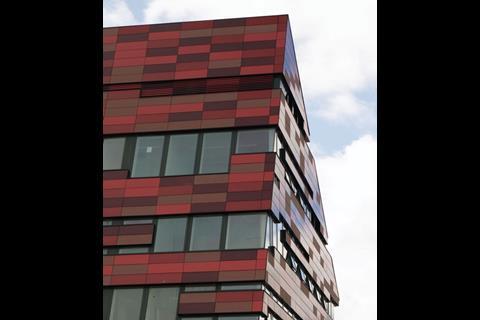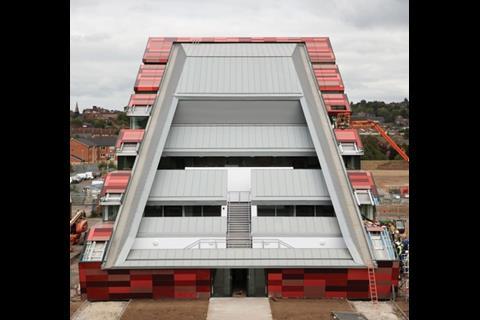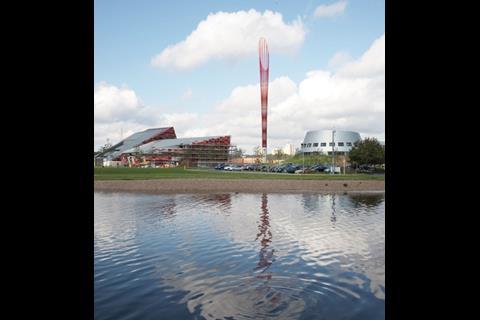Make Architects has just unveiled three pavilions for the University of Nottingham – two in terracotta allude to the city’s geology, the third is even more heavyweight …
With three buildings already completed in and around London, fledgling architect Make has unveiled its next three buildings all in one go this week.
Although they make up a cluster of free-standing pavilions for the University of Nottingham, they fall into two contrasting shapes and styles. Two of the buildings, one housing staff amenities and the other hosting induction courses for overseas students, are angular pyramids faced in large maroon terracotta tiles.
“They grow out of the ground like rocky crags,” says David Patterson, a partner in Make, in reference to Nottingham’s Castle Rock and several other eruptions of dark red sandstone around the city. As for the terracotta tiles, he adds: “Nottingham is also a red-brick city, so we have made a modern interpretation of bricks.” At the rear, the two blocks switch to standing-seam zinc sheeting, and step down in a series of open-air terraces.
They grow out of the ground like rocky crags and because Nottingham is a red-brick city, we have made a modern interpretation of bricks
David Patterson, Make
The third pavilion also grows out of the ground, says Patterson, but does not have any local references. It takes the form of a large metallic dumb-bell with two bulbous ends linked by a long narrow bar, and the whole assembly is sheathed in diamond-shaped zinc shingles.
The dumb-bell houses an incubation unit for start-up businesses in science and technology in one end, and an exhibition hall for their work at the other. The central bar straddles the main campus road. According to Patterson, the linked arrangement of bulbs represents the connection between academia and the business community.
The trio of buildings forms an extension to the university’s Jubilee campus, designed by Hopkins Architects in the late nineties. The landscaping by Craft Pegg forms a major part of the whole new development, and has a new pedestrian boulevard that is lined by 60 trees and a sequence of pools. At its centrepoint rises a giant lattice-steel spire named Aspire. It is exactly 60m high to commemorate the 60th anniversary of the university.































No comments yet